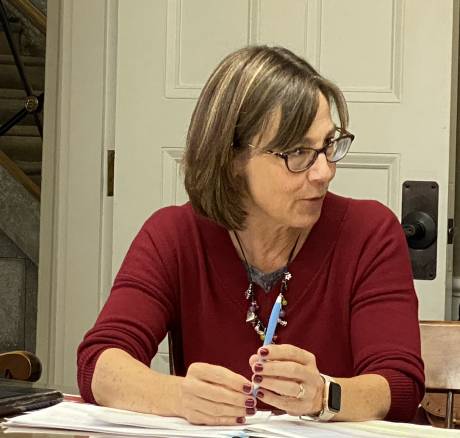It’s countdown time for Genesee County’s Office For the Aging, Director Diana Fox says.
She estimates that the last of the Baby Boomers will be turning 65 by 2030, and that will mean more seniors to serve.

Projections of an aging population on the rise put ages 60 and older at around 16,000 people in the county, to increase to nearly 20,000 by 2035, and ages 65 and older at a close second with some 16,000 to 17,000 by that same time period. Those age groups are prime candidates for OFA services and Medicare.
Fox gets frustrated to see flyers posted that promote misleading information. Her staff visits vendor fairs quarterly to try and educate older folks and guide them toward what may be the best insurance option for them, Fox said.
“So after they've met individually, or come to a group, rather, for Medicare one on one, and get some basic information, then they can be right there in a space with all the vendors at one spot, they can make appointments individually with our staff so that they're getting the right plan for them,” she said. “And we do this every single year because of open enrollment. So there's no pressure, we don't have any skin in the game, in terms of what they choose. And you know, there have been a couple of times when I've walked by my building, that I've had to take off flyers that people have just tacked up (that state) ‘call now we can save you money.’ So just a big shout out to my staff on that, because they are really well versed, and it's what they do.”
The caseload waitlist is close to last year’s at 11 more — 101 versus 90 last year — as people wait for caregiver support for an older loved one, she said, though there are no wait lists for meal deliveries, which are at about 165 active cases right now.
Arc GLOW prepares the meals, and that fee was raised 15 percent this year, “which I actually think is not bad at all,” Fox said. In the past, prices rose only 1 percent a year, so it was understandable for the larger leap this year, she said.
“And between the cost of food, minimum wage had gone up during that time, gas … I would not be surprised if it goes up again next year at some point, I don't know what that will look like,” she said. “In terms of next year, we'll be opening up another one of the congregate group meal sites, opening that backup, and we'll most likely be adding a third day at our Batavia site … so that'll increase the number of meals that we're asking for as well. They're able to do that for congregate without an issue.”
There’s not enough staff to add to the meal delivery sites, she said, but they do try to ensure that current recipients are taken care of even in times of bad weather. Called an “emergency meal,” those are delivered to recipients at some point before the weather is predicted to get nasty so that there will be extra food in their homes for when drivers can’t get out to them, she said.
“The staff has never missed a beat, they have worked so hard to make sure nothing fell through the cracks,” she said of changes in personnel, retirements, promotions, health and family issues. “The other thing I will say with that is that the majority or half, eight people, are now having to take their civil service exams. They've been there, some of them since 2018. And I can lose everyone. So it's interesting, we have a combination of things.”
Legislator Shelley Stein asked where the safe zone was, in terms of those between retirements and new staff. What happens if all of the potential retirees leave?
“That’s a really good question,” Fox said. “Because you just hope everybody doesn't go all at once. And these are estimates. I mean, we don't really know for sure … that would be tough.”
It’s not an uncommon melody, Legislator Gordon Dibble said.
“You realize you sound just like so many other employers. Not just in government,” he said. "I mean, it's the same song. Everybody's singing the same song. Where's all the help?”
It’s a dilemma only to grow more intense, according to U.S. Census Data, which states in 2018, 16 percent — or 52 million — Americans were 65 or older. With an estimated 10,000 people turning 65 each day, by 2030, an estimated 73 million — or one in five Americans — will be 65 or older, a full 20 percent of the population.
“Four short years later, in 2034, older adults are expected to outnumber children under 18 for the first time in history. The aging population is also becoming more diverse, with the proportion of non-white older adults significantly increasing in the next several decades,” it states. “Among this rapidly growing and increasingly diverse demographic cohort, there is an overwhelming desire to age at home rather than in institutional settings.”
What will that mean in the not-too-distant future? Homecare aide availability is currently "critically low nationwide," Fox said, and demand will only rise with those increasing numbers of older Americans.
"We’re fortunate to have the state 'Unmet Needs' funds to come up with creative solutions to address the aide shortage, but it’s not going to solve the overall problem of those who truly need in-home aides to help with personal care, toileting, etc.," she said in her report. "Our state and federal associations continue to advocate for better direct care worker funding and career packaging in order to hopefully entice individuals into this workforce."
